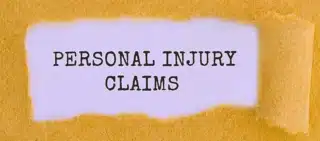
When a Dog Attacks Again and Again If dogs attack once, it’s alarming. When they attack five times, it’s no...


While legal, aftermarket modifications are usually less safe than a factory car, and each modification increases the potential of an accident. The aftermarket car part industry manufactures, remanufactures, distributes, sells, or installs parts, equipment, accessories, or alterations of the vehicle after the original manufacturer has sold it. Some of these modifications function as intended. Others, however, affect the vehicle’s operation and performance.
If you have been in an accident, and aftermarket modifications caused your accident, you may be entitled to compensation.

Aftermarket car parts are parts used to replace damaged or broken parts when repairing a vehicle. If you take your vehicle to be repaired at the dealership, they will use Original Equipment Manufacturer (OEM) parts to replace any damaged or broken parts. If you take your vehicle to an independent repair shop, they are more likely to use aftermarket parts. These are replacement parts that are designed to function the same as the OEM parts, although they are manufactured by someone other than the original manufacturer.
On average, OEM parts cost 60% more than comparable aftermarket parts. Despite saving money on repair costs, Men’s Gear LTD reports drivers of aftermarket modified vehicles face a 27% increased chance of getting into an accident as compared to drivers of vehicles with OEM parts.
Aftermarket parts are usually used because they are cheaper but able to carry out the function of the OEM parts. They are not always of bad quality, and sometimes it makes sense to use aftermarket parts.
However, with benefits, there are often risks:
There are two areas to consider when discussing aftermarket parts. The first is when only the component itself is replaced. This applies to repairs on a vehicle. Repairs are often subsidized by insurance companies, if a vehicle was damaged enough to warrant an insurance claim. The companies want to save costs, or the owner is paying out of his or her pocket and wants to save time and costs. Aftermarket parts are usually used in favor of OEM parts in standard repairs.
The second is when aftermarket modifications are performed on a vehicle using aftermarket parts. This is where the vehicle is changed from its original configuration. This includes ambulances, limousines, mobility vehicles, or off-road vehicles. Aside from functionality modifications, these can also be aesthetic or performance enhancing, such as flashy rims, hydraulics, or engine enhancers.
There are any number of aftermarket parts, as well as car modifications, that a car owner might make to his or her car. Some are mundane and will not significantly affect safety, such as a tow-bar, alarm, or parking sensors. Some repair vehicle damage, such as engine parts, doors, and bumpers. Other parts can be inherently dangerous, such as lights that can influence other drivers’ visibility or performance systems that give a car more power.
Some common aftermarket parts and modifications are:
Cold air intakes are supposed to boost an engine’s performance, improve fuel consumption, and have reusable filters. However, cold air intakes collect more dust and clog easily. This can cause a failed emissions test and cause the mass airflow sensor to fail.
These are supposed to allow more airflow, which in turn generates more horsepower, as well as gives the engine a louder and throatier sound. However, this can create problems with the oxygen sensors and catalytic converters, which makes the car more dangerous to drive. The loud noise can also startle other drivers, pedestrians, or cyclists, which creates its own danger as they might act unpredictably.
These increase the power of a vehicle. However, the engine parts of a vehicle may not be designed to handle the extra strain. Turbochargers cause a more violent explosion within the engine, which puts a greater strain on the valves. Superchargers use air to increase power, so if they are overcharged they will blow hot air into the engine, causing damage. They also expose the engine to higher pressures, putting additional strain on engine components.
Improper installation or defects in these units can cause damage to an engine, making it unsafe while driving.
Suspension systems in a vehicle are complex, involving different parts. Putting on non-standard wheels or tires can create problems with the suspension, wheel bearings, and breaks. Putting aftermarket parts in the suspension can damage the suspension system easily, affect car handling, or cause the safety features of the vehicle to be unable to work properly. Changing wheels, suspensions, or tires could cause the vehicle to behave abnormally while driving, leading to dangerous driving situations.
If you have been in an accident caused by aftermarket car parts, you can bring a personal injury lawsuit to recover damages. Generally, a person who caused an accident, by manufacturing or installing a faulty or incorrect part, or a driver who installs an unsafe modification, leading to an accident, will be liable for damages resulting from the accident. Every case is different, although there are certain parties that are commonly held liable.
Usually, in a car accident, the at-fault driver will have third-party insurance coverage, meaning that the insurance will pay out if the covered driver is at fault. Any other party who suffered damages will make a third-party insurance claim with the at-fault person’s insurance company. If an accident was caused because of another driver’s defective aftermarket parts or modifications, then his or her insurance company becomes liable.
Sometimes, when an insurance company pays for repairs, it will require aftermarket parts to be used to save costs. There have been lawsuits against insurance companies requiring aftermarket parts to be used, where such parts turned out to be inferior.
If the owner of the aftermarket vehicle has made modifications that have caused an accident, he or she will be liable. If the owner was insured, he or she may still be liable if he or she did not inform the insurance company of the modifications.
The aftermarket modifications may lead to an accident where the driver is uninsured or underinsured. The difference between uninsured and underinsured is that uninsured means a person has no insurance coverage at all, while underinsured is where someone has insurance, but the policy limits are insufficient to pay for the full claim. In such a situation, the owner would be liable for the difference between the insurance coverage and the full amount of the claim.
The average driver does not have sufficient knowledge of a vehicle’s mechanics, nor details of the repairs getting carried out, to ensure that the parts used are safe. If a mechanic knowingly uses inferior or incorrect parts or does not correctly install a part, causing it to fail, then the mechanic will become liable if aftermarket modifications cause an accident.
Sometimes parts may be low quality when manufactured, either because of a bad design or using inferior materials. If this is the case, the part can fail even if installed correctly. If a manufacturer has provided a substandard part, and it can be proved that this caused the part to fail resulting in an accident, then the manufacturer can be held liable.
A car accident lawyer can help you identify the at-fault party in your case and hold them liable for injuries caused by aftermarket modifications.

When a Dog Attacks Again and Again If dogs attack once, it’s alarming. When they attack five times, it’s no...

Overview of the Personal Injury Claim Process in Illinois No one expects to suffer an injury or get involved in...

Exploring Caps on Damages in Illinois Personal Injury Cases Illinois does not have laws capping damages in successful personal injury...